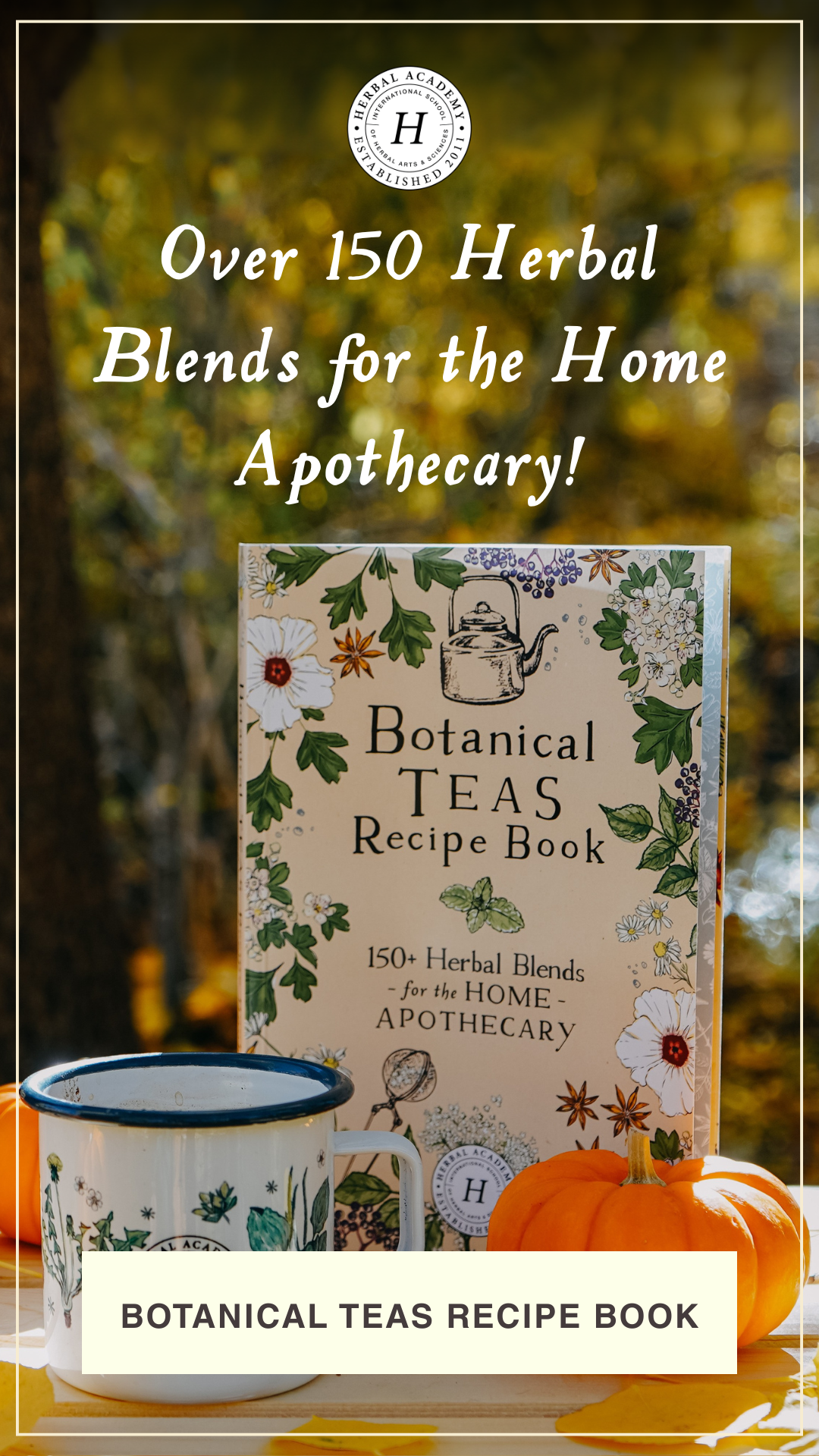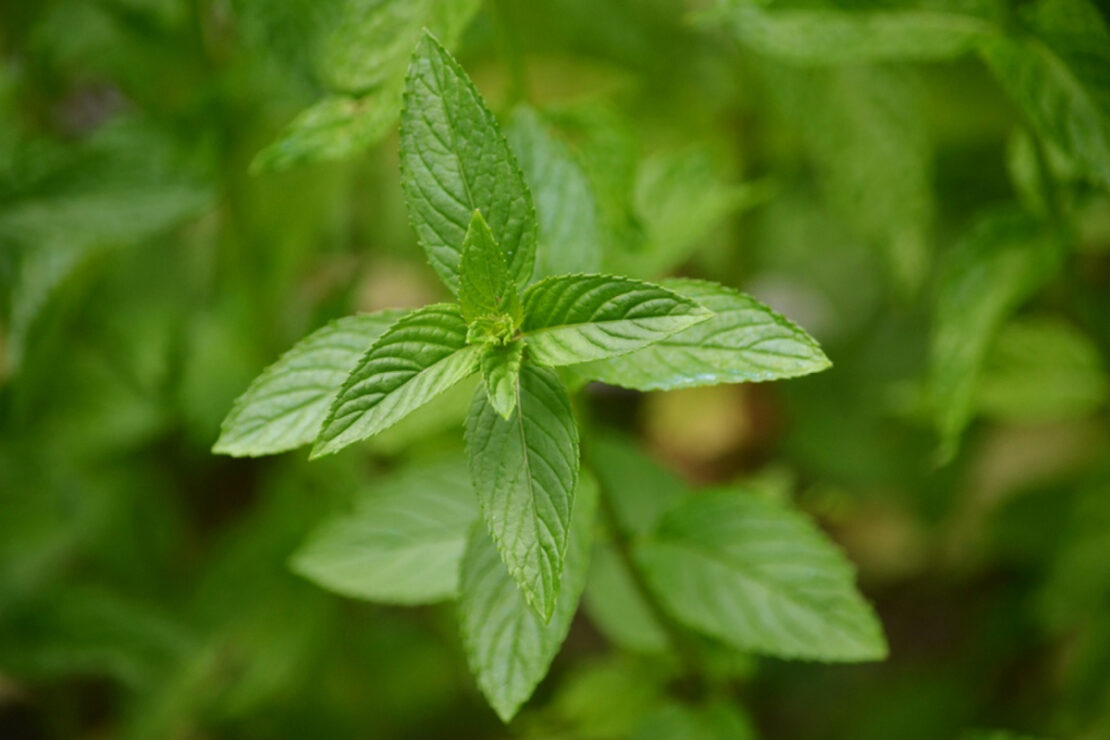
5 Easy to Grow Perennial Herbs for Busy Gardeners
For anyone who has attempted gardening, it can be hugely disappointing to spend an entire weekend setting up your garden and then watch your garden plants decline or wither because you were wrapped up in work and life responsibilities and didn’t have time to take care of it. On the other hand, having a garden can bring so much joy into your life, especially as an herbalist, so don’t let a busy schedule stop you! With a few tips and tricks, you can plant a garden and reap the benefits of it. Let’s learn about some tips for busy gardeners, including five easy to grow perennial herbs.
Gardening Basics
The benefits of gardening are bountiful. Gardening helps you connect with plants because you’re able to watch a plant grow throughout its entire life cycle, from seed to harvest. Harvesting plants from your garden is not only rewarding and convenient, but it’s also a sustainable alternative to wild harvesting.
There are many ways to garden, from raised beds and pots, to directly in the soil. While some plants may have different growing preferences depending on what region you live in, there really is no right answer. My advice is to choose the option that’s most accessible to you, given your current schedule and financial situation.
Starting plants from seeds can be very fulfilling, but young or newly transplanted plants are usually more sensitive and require more attention and upkeep, including frequent watering. If you have a busy schedule, planting starts is a much easier option. This is because you can plant them directly in the soil, water them consistently, and watch them grow, with a bit more success and more immediate reward. Check your local plant nursery, herb shop, or grocery stores for herb starts.
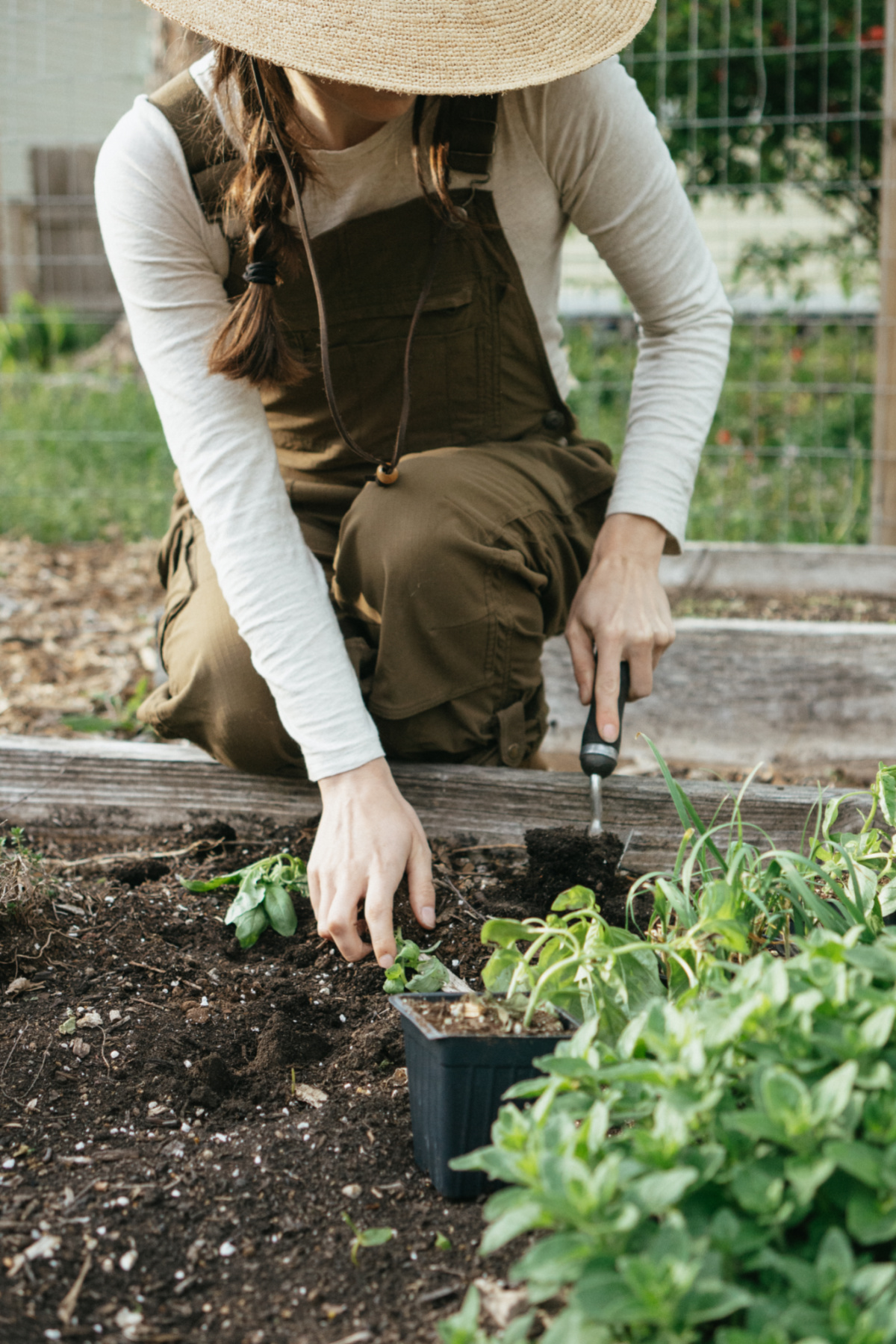
What is a Perennial?
There are many types of plants that have different growing styles. Annuals live for one year, die in the winter, and must be replanted again. Perennial plants come back every year and live for at least three or more growing seasons (Francis & Potts, n.d.). They’re much less work than annuals because they grow back each year from roots that go dormant in the winter, but typically gain strength, energy, and size per year.
Since perennials live for many years, they put energy into growing strong roots (Francis & Potts, n.d.) that create a hardy plant that requires little maintenance over the years. Many perennial herbs are drought-resistant, don’t need to be watered every day, and can most likely survive if you miss a watering session.
5 Easy-to-Grow Perennial Herbs
These five perennial herbs are easy to grow because once you plant them, they keep coming back year after year and require minimal upkeep. To support new plant growth, prune away the dead plant material at the beginning of spring every year. Most of these herbs are pretty hardy and not too picky about where they grow. However, your region’s climate may affect how easy it is to grow these perennial herbs. It’s a good idea to research your specific climate before you get started to make sure these plants will grow well where you live.
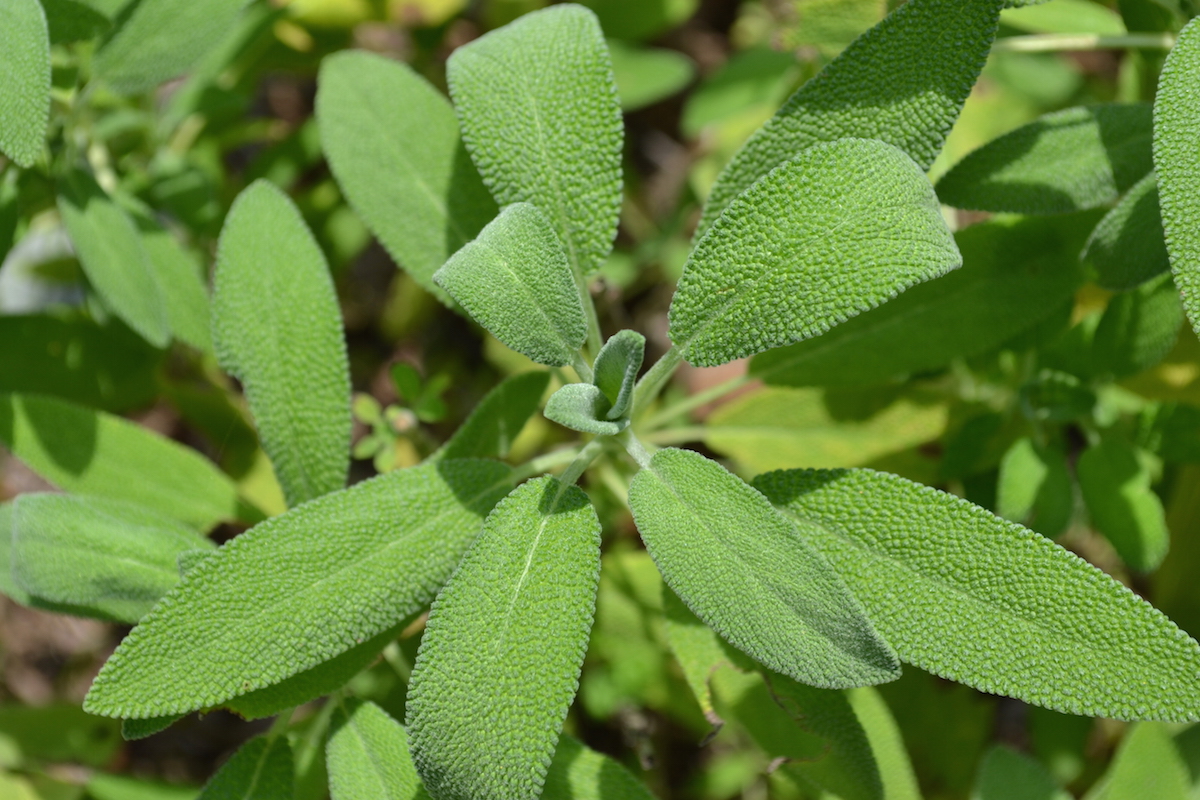
Garden Sage (Salvia officinalis)
Sage is a hardy plant that has been known to outlast relatively harsh winters. It lives about three to four years, then should be replanted (Grieve, 1931). Sage thrives in medium to full sun, grows well in containers, and can even be grown indoors near a sunny window.
Garden sage (common sage) is often used for both culinary and herbal purposes. It has been traditionally used by herbalists as a mouthwash to ease painful gums and a sore throat. When taken internally or used in aromatherapy, garden sage can provide lung support (Grieve, 1931). Also, sage is a powerful anti-inflammatory, anti-fungal, and antibacterial herb that can help reduce inflammation in the digestive tract and ease stomach pain when taken internally (Rose, 2018).
White sage (Salvia apiana) is a sacred plant to many Native American tribes and traditions. You’ve probably seen it in smudge bundles that are burned and used to cleanse and purify a person, space, or important object or symbol, or for protection. White sage is currently on the United Plant Savers “At-Risk List” for medicinal plant species (United Plant Savers, n.d.). Growing garden sage and using this or other plants as a smudge in lieu of white sage, unless you are a traditional user, is a sustainable and ethical alternative to using white sage.
Safety
Sage should not be consumed as a tonic, that is not insubstantial (much greater than culinary) doses daily at length. It contains thujone and may also be toxic when taken in high dosages. Thujone is volatile and most of it dissipates when cooked, so fresh herbal preparations may be more sensitizing to the stomach than culinary use. Sage should be avoided during pregnancy beyond normal culinary use.
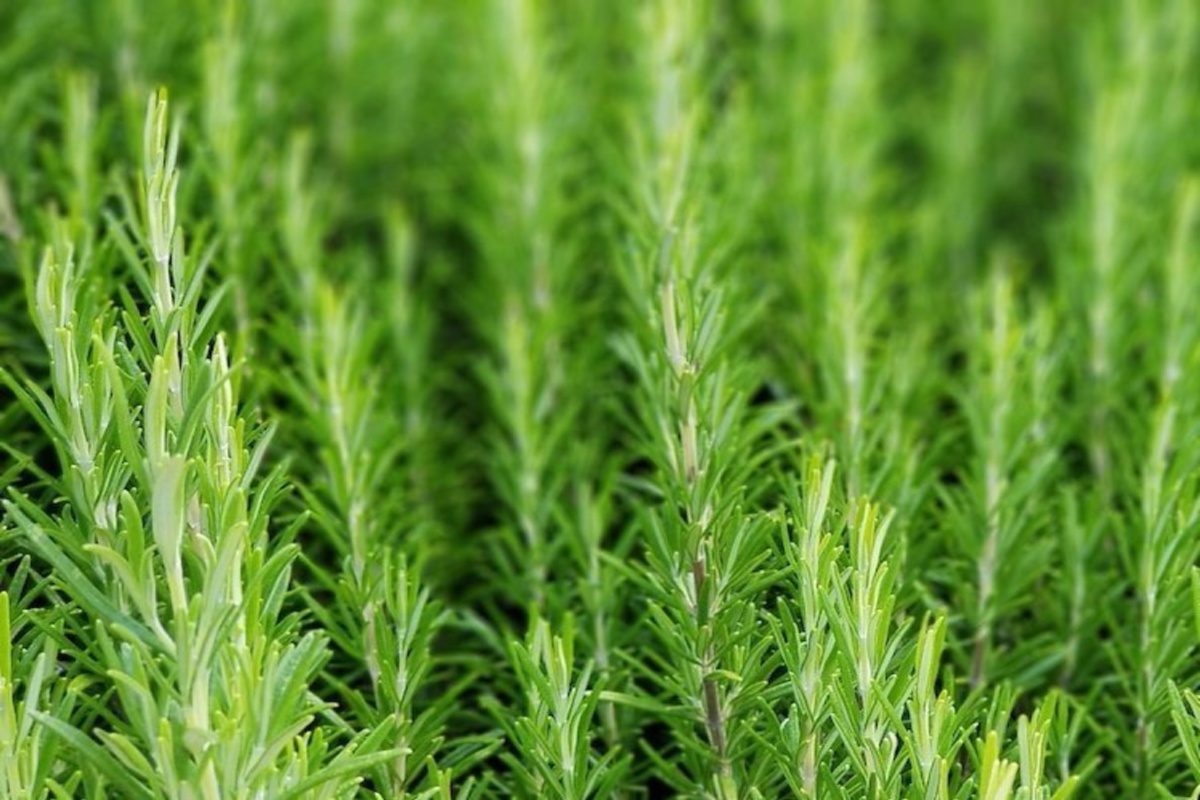
Rosemary (Salvia rosmarinus)
Rosemary thrives when planted in a sunny spot with well-drained soil. It likes hot & dry climates, but will also grow in cool or cold climates, and can be grown indoors next to a sunny window. Rosemary easily propagates and you can start it from cuttings. Here are a few easy steps for growing rosemary from cuttings.
- Take 2 cuttings about 3 inches long from an established plant.
- Trim off most of the lower leaves to 1½ inches up the stem.
- Place them in a 3-inch pot with soil.
- Water them every other day.
Once established, rosemary is drought-resistant and only needs to be watered about every week. Allow the soil to dry out thoroughly between each watering (Masabni & King, 2016).
Rosemary has been used in herbal traditions both topically and internally, and as a culinary herb in marinades and seasonings. Rosemary contains antioxidants and anti-inflammatory compounds, which are believed to help boost the immune system and improve blood circulation when consumed internally (Hinck, 2018).
There are numerous symbols and meanings attributed to rosemary, and some allude to traditional herbal uses.
In the play Hamlet, Ophelia says to Laertes, “There’s rosemary, that’s for remembrance.” (Shakespeare, n.d., 4.5. p. 9). Rosemary is considered a cognitive stimulant and can help improve memory. It’s also known to support alertness, intelligence, and focus (Hinck, 2018). Its fresh, bright aroma can be uplifting and has been linked to improving mood, clearing the mind, and relieving stress in those with chronic anxiety or stress hormone imbalances (Hinck, 2018).
Rosemary can also be used topically to help protect skin cells from sun damage and free radicals. Rosemary essential oil is commonly used in hair treatments to promote hair growth, slow baldness and graying, and decrease dandruff and dryness (Hinck, 2018). Remember, if you are using an essential oil topically, it’s important to dilute it with a carrier oil first, like coconut or olive oil. (Check out our Guide to Essential Oil Safety to learn more.)
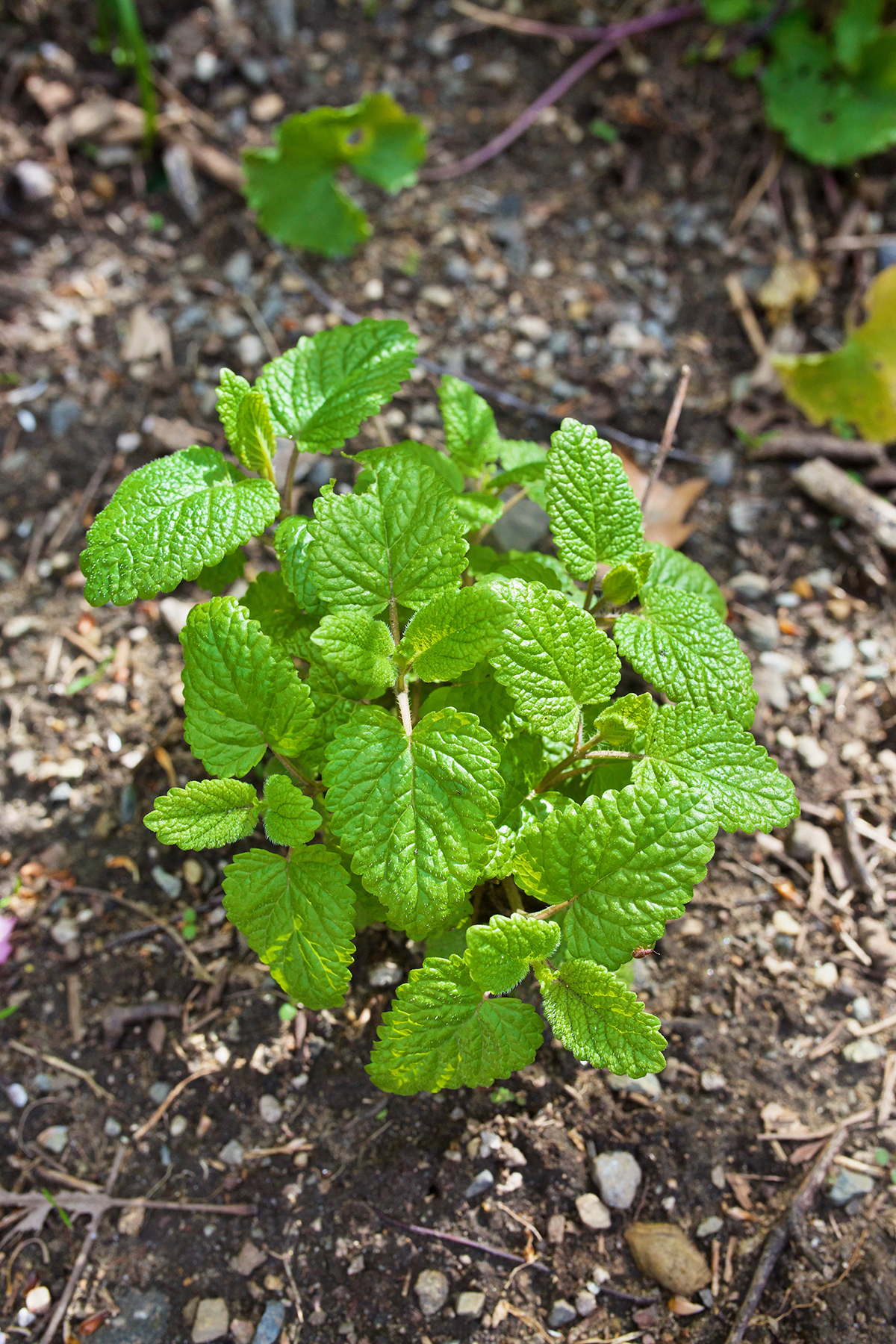
Lemon Balm (Melissa officinalis)
Lemon balm thrives in full sun but can grow in partial shade too. This strong plant can grow in almost any soil type, but tends to flourish in rich, well-drained soil. Lemon balm spreads prolifically by rhizomes and self-seeding, so it’s best to grow it in a container if you don’t want it to take over your entire garden bed.
Lemon balm is in the mint family and is a mild nervine. It’s commonly used to support digestion and to ease stress. It’s a mild antispasmodic and is traditionally used to soothe nervous indigestion, nausea, and bloating (Kloos, 2017). It’s believed to help calm anxiety while uplifting the spirit.
Lemon balm also has some antiviral properties, and it may provide some support for common strains of herpes viruses, such as those that cause cold sores (Kloos, 2017).
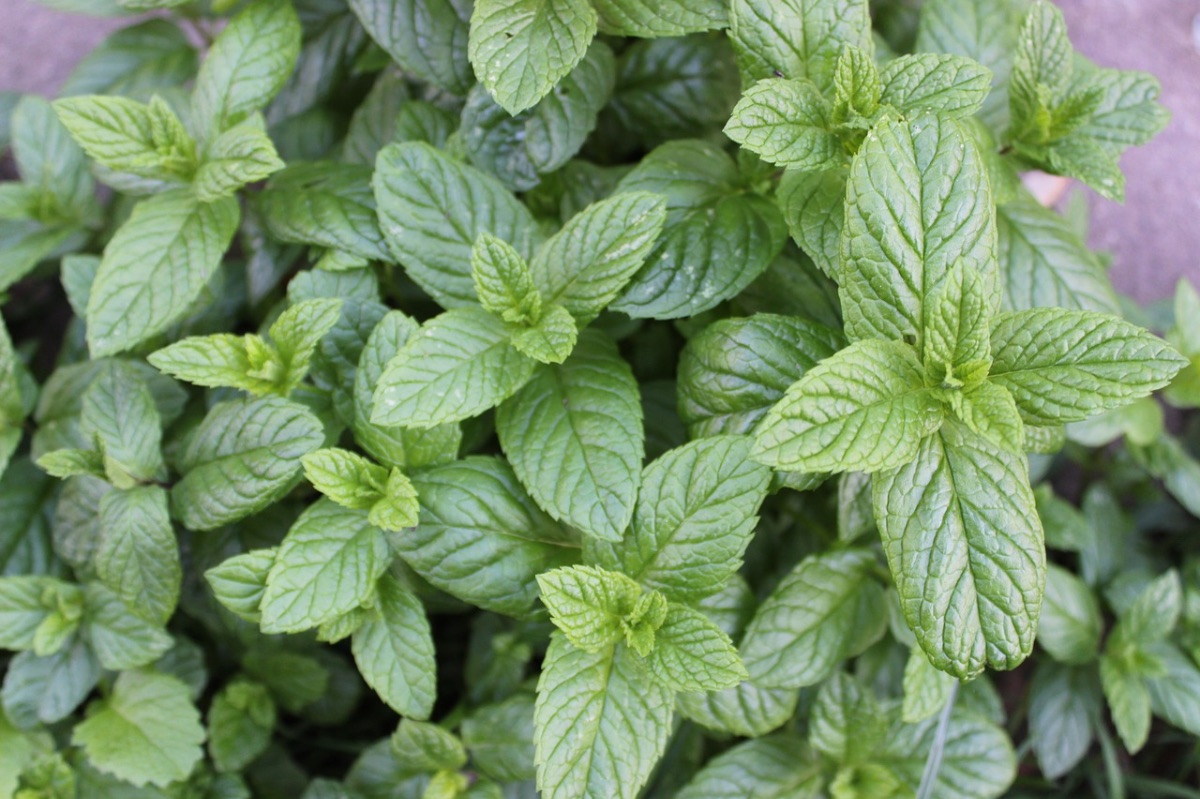
Peppermint (Mentha piperita)
Peppermint generally grows best in moist soil and doesn’t tolerate dry conditions very well. It likes shady areas and partial shade—or full sun if it’s watered well enough. It grows by spreading underground rhizomes and does best in a contained pot so it doesn’t take over the garden.
Peppermint is most commonly used for digestive issues, soothing stomach cramps, nausea, and indigestion. It’s also been known to help with heartburn and hiatal hernias (Moore, 1993). Peppermint is a tasty herbal tea, but also a great addition to smoothies, juices, cocktails, and mocktails.
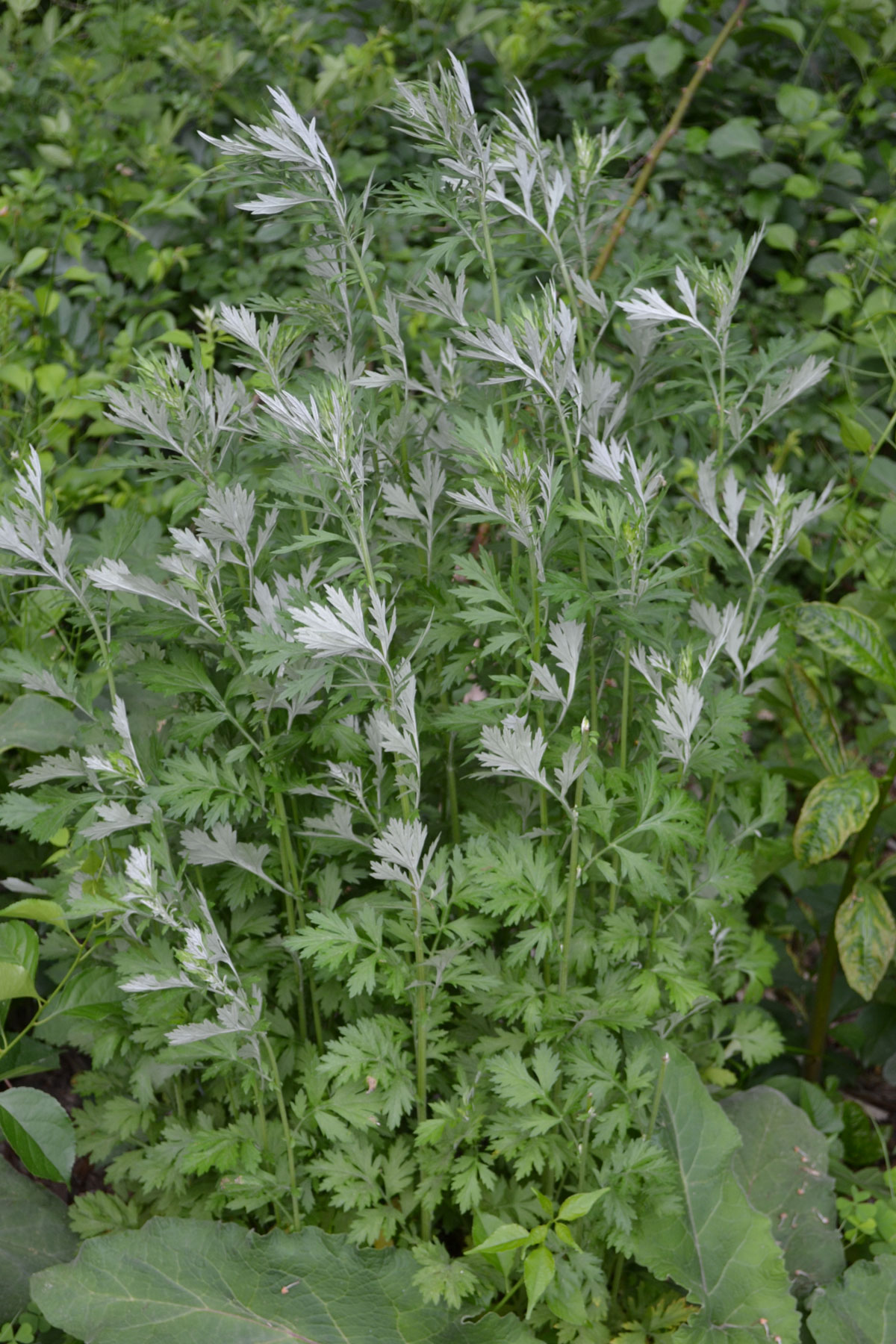
Mugwort (Artemisia vulgaris)
Mugwort loves full sunlight and slightly moist, well-draining soil. It can tolerate partial shade and dry soils, but won’t survive in wet soil. Once the plant is established, mugwort is hardy and can tolerate drought and adjust to many different types of soil conditions (Gibson & Russell, n.d.). Mugwort is considered an invasive species and can grow quite easily through root spreading, so it’s best grown in a container pot.
In terms of herbal usage, mugwort has many applications, including supporting digestion, menstruation, and sleep. Mugwort has traditionally been used to enhance lucid dreaming and help access areas of physic unconsciousness (Kloos, 2017).
Learn more about mugwort in How to Use Mugwort in Dreams, Sleep, and More.
Safety
Do not consume mugwort if you are pregnant or breastfeeding.
In Closing,
There are so many types of plants and ways to garden that even the busiest person can grow plants. Perennial herbs are some of the easiest plants to grow due to their hardiness, simple upkeep, and ability to regrow every year without human assistance. Hopefully, with these new ideas, you feel empowered and motivated to start your own herb garden and help yourself cultivate a deeper connection with plants and the Earth.
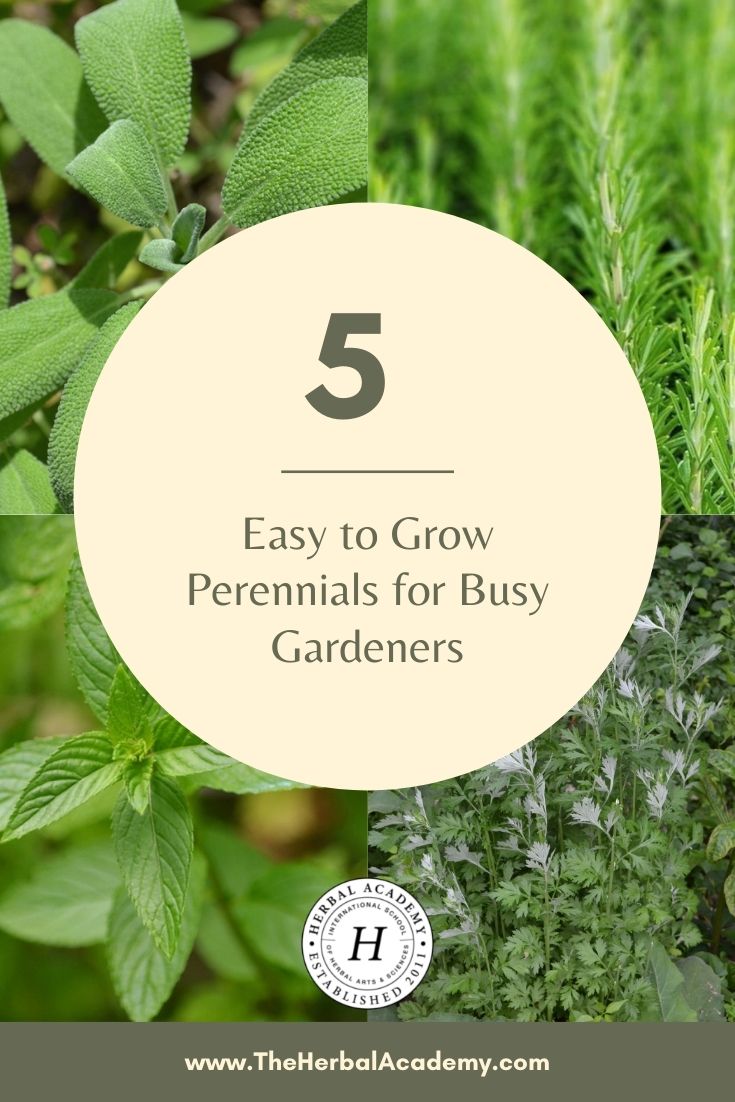
REFERENCES
Francis, M. & Potts, L. (n.d.). What’s the difference between an annual and a perennial? [Blog post]. HGTV. Retrieved from https://www.hgtv.com/outdoors/flowers-and-plants/flowers/flower-power-annuals-vs-perennials
Gibson, M. & Russell, E. (n.d.). How to grow mugwort (Artemisia vulgaris) [Blog post]. Retrieved from https://www.gardeningchannel.com/how-to-grow-mugwort-artemisia-vulgaris/
Grieve, M. (1931). A modern herbal.Retrieved from https://www.botanical.com/botanical/mgmh/s/sages-05.html#com
Hinck, M. (2018). The health benefits of rosemary [Online newsletter]. Retrieved from https://www.flushinghospital.org/newsletter/the-health-benefits-of-rosemary/
Kloos, S. (2017). Pacific Northwest medicinal plants: Identify, harvest, and use 120 wild herbs for health and wellness. Portland, OR: Timber Press.
Masabni, J. & King, S. (2016). Growing rosemary [Book excerpt]. Retrieved from https://agrilifeextension.tamu.edu/browse/featured-solutions/gardening-landscaping/rosemary/
Moore, M. (1993). Medicinal plants of the Pacific Northwest. Sante Fe, NM: Museum of New Mexico Press.
Rose, S. (2018). The herbal guide to sage: An easy-growing healing herb [Blog post]. Retrieved from https://gardentherapy.ca/healing-herb-sage/
Shakespeare, W. (n.d.). Hamlet. Sparknotes. (Original work published 1609). Retrieved from https://www.sparknotes.com/nofear/shakespeare/hamlet/page_248/
United Plant Savers. (n.d.). Species at-risk list [Website]. Retrieved from https://unitedplantsavers.org/species-at-risk-list/


